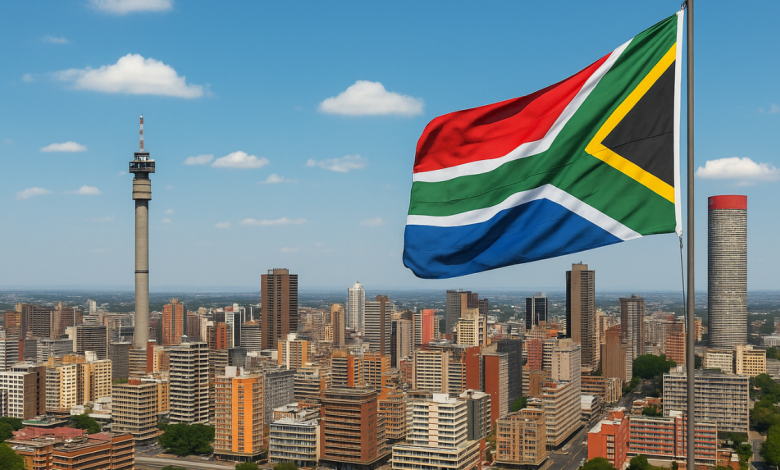The Future of South Africa’s Economic Growth Post-Forex Funding

South Africa’s economic growth is standing at a critical crossroads. After years of economic stagnation, rolling blackouts, and infrastructure bottlenecks, the country is beginning to turn a corner. Thanks to recent forex funding from global institutions like the World Bank and IMF, South Africa has a rare opportunity to reshape its economic future if it makes bold and strategic reforms.
In this article, we explore how forex funding is influencing South Africa’s recovery, what challenges remain, and what needs to happen to unlock long-term prosperity.
ALSO READ: Mobile Trading: How Smartphones Are Democratizing Investment
What Is Forex Funding, and Why Does It Matter?
Forex funding refers to financial support provided in foreign currency, often through loans or aid from international financial institutions. In June 2025, South Africa secured a $1.5 billion loan from the World Bank, aimed at upgrading the country’s energy and transport infrastructure. The deal comes with favorable terms, including a three-year grace period and low interest rates, designed to ease short-term financial pressure.
According to Reuters, the funds are earmarked for critical sectors that have long been identified as growth inhibitors—such as electricity, ports, and rail.
“This partnership marks a significant step toward addressing South Africa’s pressing economic challenges of low growth and high unemployment,” a National Treasury official told AP News.
Current Economic Outlook: A Fragile Recovery
The South African economy is gradually recovering, though the pace remains slow. According to the 2024 Article IV Consultation by the IMF and National Treasury, real GDP growth is expected to rise from 0.9% in 2024 to 1.5% in 2025, with medium-term growth projected to reach 1.8% annually if reforms continue.
These estimates are supported by the National Treasury, which attributes this potential uptick to stabilized electricity generation, revived private investment, and renewed global investor confidence.
However, this projected recovery is fragile. It is heavily dependent on the government’s ability to implement structural reforms and use forex funding effectively.
Forex Funding: A Tool, Not a Solution
While forex funding helps plug fiscal gaps and invest in key infrastructure, it isn’t a magic wand. Without serious reforms, these loans could add to the country’s already heavy debt burden. South Africa’s public debt currently sits above 75% of GDP, and debt servicing costs continue to consume a significant portion of the national budget.
The OECD’s 2025 Economic Survey of South Africa warns that forex funding must be accompanied by decisive reforms to be impactful:
“Structural reforms—including electricity sector transformation, logistics reform, and fighting corruption—are key to enhancing economic dynamism, reducing unemployment, and alleviating poverty,” the OECD stated in its official report.
What’s Holding Back South Africa’s Economic Growth?
Several persistent issues continue to hinder South Africa’s full economic potential:
- Energy Crisis: Load shedding has disrupted productivity across all sectors. Although forex funding will help stabilize Eskom and promote independent power generation, consistent delivery is still lacking.
- High Unemployment: The jobless rate remains above 32%, with youth unemployment even higher. Labor market reforms are urgently needed to stimulate inclusive job creation.
- Logistics and SOEs: Dysfunctional state-owned enterprises and poor infrastructure delay exports, discourage investment, and raise business costs.
- Policy Uncertainty: Investors seek clear and stable regulations. Mixed messages around energy, mining, and land reform continue to create hesitation.
How Forex Funding Can Unlock a New Chapter
Forex funding gives South Africa a unique opportunity to reset. If used wisely, this capital can:
- Stabilize the energy grid by enabling renewable energy projects and upgrading aging infrastructure.
- Revive rail and port efficiency, boosting exports and reducing supply chain costs.
- Support skills development, especially in tech, construction, and green industries, making young people employable.
- Promote green growth, aligning with global trends in decarbonization and sustainability.
However, the real key lies in implementation. It’s not just about money; it’s about leadership, policy clarity, and political will.
The Global Context: A Narrow Window for Action
Globally, emerging markets face tighter financial conditions, making forex funding harder to secure and more expensive. South Africa, therefore, must act fast. Effective use of current funding could improve the country’s credit rating and open doors to further investment.
If the reforms stall, future borrowing may become more costly or even unavailable. As the IMF warns, fiscal risks remain elevated without structural change and fiscal discipline.
READ MORE: How Trading Platforms Are Creating Job Opportunities in Gauteng
Choosing Progress Over Stagnation
The future of South Africa’s economic growth depends not just on loans or aid, but on tough choices and honest governance. Forex funding offers a temporary safety net. But long-term recovery will be shaped by reforms that reduce inequality, boost productivity, and empower citizens through jobs and opportunity.
South Africa’s next chapter is not yet written. With the right vision and action, the country can transform forex-backed recovery into sustainable, inclusive growth.




